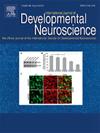A Novel Homozygous Frameshift Variant of SACS Gene in the Turkish Siblings With Autosomal Recessive Spastic Ataxia of Charlevoix-Saguenay (ARSACS)
IF 1.6
4区 医学
Q3 DEVELOPMENTAL BIOLOGY
引用次数: 0
Abstract
Pathogenic variants of sacsin (SACS) gene cause autosomal recessive Spastic Ataxia of Charlevoix-Saguenay (ARSACS). It is a hereditary neurological disorder manifested with gait ataxia, intentional tremor, lower limb pyramidal signs and pes cavus. It was originally described in the late 1970s and has a high prevalence in northeastern Quebec, Canada. Here, we present for the first time a new SACS frameshift variant in two Turkish siblings. We detected a new homozygous frameshift variant of the SACS gene in the Turkish siblings diagnosed with ARSACS for the first time.

常染色体隐性痉挛性共济失调(ARSACS)土耳其兄弟姐妹SACS基因纯合子移码变异
SACS基因的致病变异引起常染色体隐性痉挛性共济失调。它是一种遗传性神经系统疾病,表现为步态失调、故意震颤、下肢锥体征和足弓足。它最初是在20世纪70年代末被描述的,在加拿大魁北克省东北部有很高的患病率。在这里,我们首次在两个土耳其兄弟姐妹中提出了新的SACS移码变体。我们首次在诊断为ARSACS的土耳其兄弟姐妹中检测到SACS基因的一个新的纯合移码变体。
本文章由计算机程序翻译,如有差异,请以英文原文为准。
求助全文
约1分钟内获得全文
求助全文
来源期刊
CiteScore
3.30
自引率
5.60%
发文量
78
审稿时长
6-12 weeks
期刊介绍:
International Journal of Developmental Neuroscience publishes original research articles and critical review papers on all fundamental and clinical aspects of nervous system development, renewal and regeneration, as well as on the effects of genetic and environmental perturbations of brain development and homeostasis leading to neurodevelopmental disorders and neurological conditions. Studies describing the involvement of stem cells in nervous system maintenance and disease (including brain tumours), stem cell-based approaches for the investigation of neurodegenerative diseases, roles of neuroinflammation in development and disease, and neuroevolution are also encouraged. Investigations using molecular, cellular, physiological, genetic and epigenetic approaches in model systems ranging from simple invertebrates to human iPSC-based 2D and 3D models are encouraged, as are studies using experimental models that provide behavioural or evolutionary insights. The journal also publishes Special Issues dealing with topics at the cutting edge of research edited by Guest Editors appointed by the Editor in Chief. A major aim of the journal is to facilitate the transfer of fundamental studies of nervous system development, maintenance, and disease to clinical applications. The journal thus intends to disseminate valuable information for both biologists and physicians. International Journal of Developmental Neuroscience is owned and supported by The International Society for Developmental Neuroscience (ISDN), an organization of scientists interested in advancing developmental neuroscience research in the broadest sense.

 求助内容:
求助内容: 应助结果提醒方式:
应助结果提醒方式:


